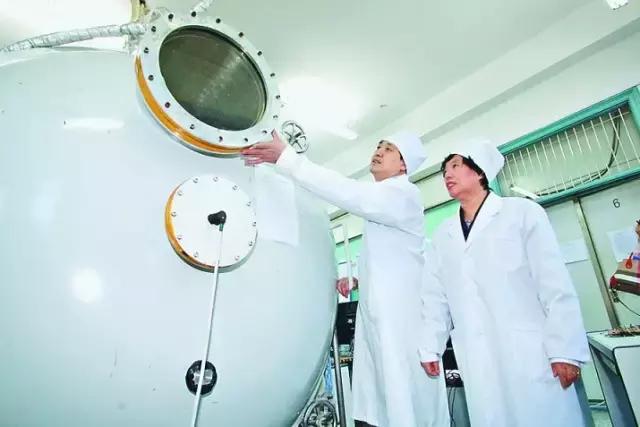Written by: Zou Weirong and Qiu Xuelei
Translated by: Zhou Dongyi
Edited by:
Date:
People's Liberation Army Beijing, January 23 (written by Zou Weirong and Qiu Xuelei) The reporter has learned from the National Bureau of Science and Technology of the People's Republic of China that the laser communication terminal on the 13th of China’s new generation of high-rail technology experimental satellites was successfully launched in 2017. It was the first high-speed satellite to ground high-speed laser two-way communication experiment. This experiment was carried out by the satellite laser communication team led by Professor Ma Jing and Professor Tan Liying from Harbin Institute of Technology. The test mission was a complete success! This establishes China as a leader in the field of space high-speed information transmission and the cutting-edge field of aerospace technology. It also lays solid foundation for the implementation of major national science and technology projects in the integrated information network of heaven and earth.
At 19:04 on April 12, 2017, China successfully launched the No. 13 satellite on the Changzheng III B launch vehicle at the Xichang Satellite Launch Center. Satellite laser communication has the advantages of large communication capacity, long transmission distance and good confidentiality. It is an irreplaceable means of building a spatial information highway. It is also at the frontier of science and technology in the current international information field. High-altitude satellite laser communication technology is faced with great technical difficulties. This is currently a “hot area” for various countries to develop.
Professor Ma Jing and Tan Liying have achieved a great number of technological breakthroughs and overcome many international difficulties. They have created a new opportunity for the development of international satellite laser communications. The first breakthrough is the stability of the test tracking link. Between the satellites and ground stations, at an altitude of nearly 40,000 kilometers from the earth, it solved the high-precision problem of the beam like “needle-to-grass”. It also effectively overcame environmental influences from satellite movements, platform jitter, and complexities in space. Fast locking and stable tracking of the beam signal was successfully achieved. The average acquisition time was 2.5 seconds with a tracking stability of 100% for 1 hour. The second breakthrough is the high transmission rate. For the first time, the world has achieved high-speed satellite laser two-way communication, with the highest rate of 5Gbps. Third, the communication quality is excellent. For the first time, laser communication with high data rates of 600Mbps, 1.25Gbps, 2.5Gbps, and 5Gbps has been achieved. The error rate is less than one per million. Fourth, a number of independent innovations and advanced technologies have been adopted. Wavelength division multiplexed laser communication technology is being used for the first time between satellites and the ground. The successful demonstrations of several key technologies, such as high-speed laser information reception and transmission and atmospheric impact compensation for high-speed laser communication have been verified. This lays the foundation for follow-up military and civilian business applications.
The rapid development of innovation has achieved satellite laser communication. This is an example of China's independent innovation in space science and technology and the development of civil-military integration. In recent years, the State Bureau of Science, Technology and Industry has led the country in the development of aerospace with a focus on the technological frontier. The National Science and Technology Agency for the Defense Industry has supported the research of HIT from the pre-study to the completion of the laser communication experiment -from the Low-earth Satellite of the Earth No. 2 to the successful implementation of the high-altitude satellite-to-ground laser of the No. 13 satellite. This has guaranteed the project security from initial research of basic technology to flight product verification.
The team demonstrated independent innovation and brought together domestic strengths in R&D. They overcame many international problems. The team has obtained more than 70 national invention patents as well as two national science and technology invention awards. They have developed five generations of satellites adapted to different orbits. The terminal products have achieved a major leap from big to small, from heavy to light and from low rail to high rail for satellite laser communication terminals. This has established trial systems for high, low and terrestrial laser communication trials. At the same time, this technology will also be used for major space engineering tasks, such as the integration of information and network engineering and spurring the development of the industry, creating new opportunities for aerospace science and technology.

Professor Ma Jing and Professor Tan Liying in the laboratory. (Photo by Su Qiang)


